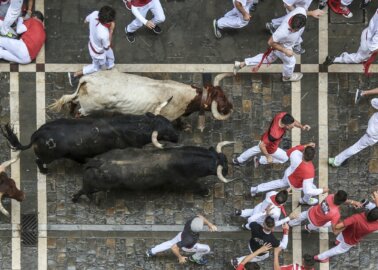RIP Kumbuka: The Story of a Legendary Gorilla Who Died at London Zoo
Kumbuka – a silverback gorilla who made headlines after escaping from his enclosure at London Zoo in 2016 – has died.
Kumbuka the lowlands silverback gorilla (Photo by Tony Sellen) http://t.co/I4hwvezYjU pic.twitter.com/lW3Y4hKNDF
— Flickr (@Flickr) May 26, 2015
The 21-year-old is reported to have been sedated after zookeepers noticed his sluggish behaviour and lack of interest in food. Once under, vets found he was suffering from a widespread infection – which he may have been suffering from for some time prior to its discovery.
The devoted father of two died in the place he so desperately wanted to get away from without ever experiencing the freedom of his natural home in the forest.
Kumbuka’s Story
Kumbuka spent his days in confinement, being gawked at by a constant stream of visitors, and having every aspect of his life controlled by humans.
He was born in captivity at Belfast Zoo in 1997 only to be rejected by his mother – not uncommon for captive animals – and subsequently moved to Stuttgart.
In 2006, Kumbuka was transferred to Paignton Zoo in Devon before being moved to London Zoo in 2013, where he was used in its breeding programme and held captive until his dying day.
He served a life sentence, though he’d committed no crime.
Sadly Silverback Gorilla, ‘KUMBUKA’ died of severe infection at ZSL London Zoo! pic.twitter.com/syI0OaHZcG
— Syed Mehfooz Husain (@syedart) October 27, 2019
Zoos Are Prisons
Zoos are in the business of misery and death – from taking wild animals from their homelands and disrupting their familial bonds to subjecting them to unnatural living conditions.
Even though £5 million was pumped into building Kumbuka’s enclosure, the abnormal environment came nowhere close to the wide-stretching rainforests gorillas are born to explore. Enclosures in UK zoos and safari parks are on average 100 times smaller than the minimum home range for animals in their natural habitats.
In zoos, their every decision – including what to eat, when to sleep, and who their mate is – is controlled by humans. They can’t roam vast distances or do many of the other things that are natural and important to them. Often, they aren’t even allowed stay with their families, as young animals are commonly transferred to other zoos.
The daily stress and lack of stimulation often leads to abnormal and self-destructive behaviour – for example, pacing, walking in tight circles, rocking, swaying, and self-mutilation – a condition known as “zoochosis”.
This type of behaviour is almost unheard of in their wild counterparts. Zookeepers sometimes give the animals antidepressants, tranquilisers, or antipsychotic drugs to try to conceal their distress.
Forced into a miserable existence in the name of entertainment, a life behind bars is no life at all for wild animals.
What Can You Do
- Never ever visit a place that holds wild animals captive.
- Tell you friends and family why they should stop visiting zoos.
- Share Kumbuka’s story.
- Take action for the animals who are languishing inside SeaWorld’s watery prisons:




